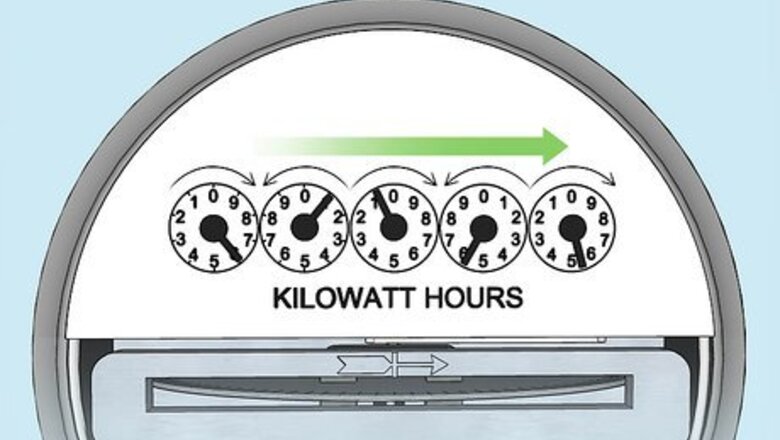
views
- For analog meters, each dial represents one digit. Always round down and note that the orientation of each individual dial changes.
- On digital meters, the reading is displayed on the screen. Ignore any decimals or extra digits at the end.
- Subtract your previous bill’s total kWh usage from the current reading you’ve taken to determine your current monthly usage.
Analog Dial Meters
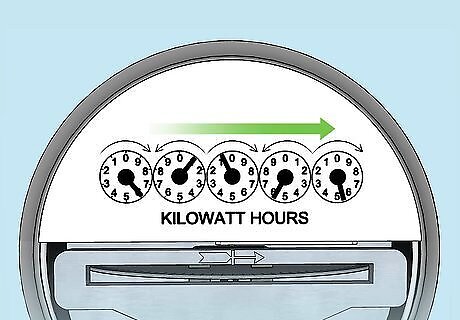
Read the numbers from the left to the right. Locate the 4 or 5 small dials on the face of your electrical meter. The dials are arranged with the biggest digit on the left and the smallest digit on the right, just like you’re reading a line in a book. A lot of sources and energy companies will tell you to read the meters right to left, but frankly, that’s just complicating things unnecessarily. You can either write down the numbers, or draw each dial on paper and analyze them indoors if it’s cold out. Some meters have 4 dials, while others may have 5 dials. The number of dials doesn’t change this process at all. Note, this process only applies to the dial meters—not the analog rotary meters with spinning numbers. The rotary meters are read like digital meters.
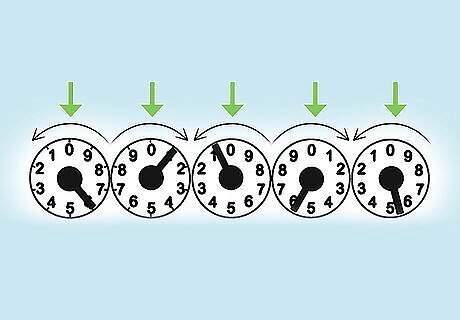
Note which direction the pointer on each dial is supposed to go. Each dial on your meter will normally alternate between clockwise and counterclockwise. Look on top of each dial to see if the numbers are front to back, or back to front. Some meters will even have little arrows on top of each dial displaying which direction they go. You may even be able to see the little dials moving in the direction they’re meant to travel if you’re currently using a lot of juice.
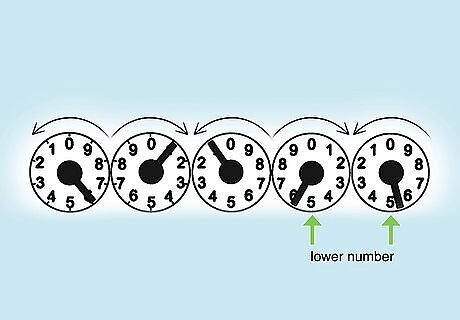
Round down when the dial is between two numbers. The pointer on the dial is rarely going to be sitting exactly on a number. When it’s between two digits, always round down to the lower number. So, if the pointer sits between 5 and 6, read it as a 5. Remember! We’re rounding down by number, not direction here—for the counterclockwise dials, the lower number will be to the left, not the right. The one exception is if the dial is between a 9 and 0 on a clockwise-oriented dial. Here, the 0 actually represents “10,” so rounding down is the 9.
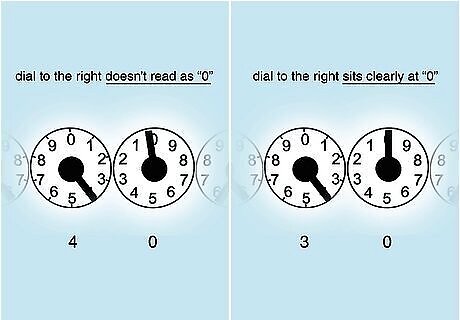
Round down if the dial is on a number but the dial to the right reads 0. If a number sits directly on a number and the dial to the right doesn’t read as “0,” record the number the pointer is sitting on top of. If the dial on the right is a 0 though, round down to the next lowest number. For example, if the pointer on a dial rests perfectly on a 4 but the dial to the right of it sits clearly at 0, then treat the digit as a 3.
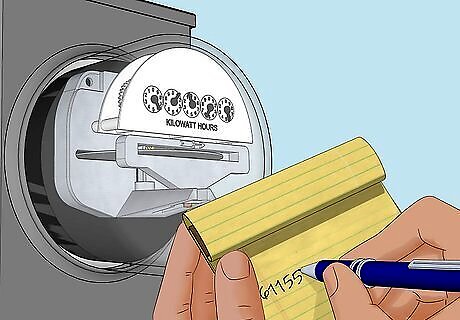
Jot down the total number to find your electricity usage. You now have the reading for the total energy consumption of your home. The number is in kilowatt-hours, or kWh. This is the measure of how many kilowatts your home has consumed, with 1 kilowatt-hour equal to the consumption of 1,000 watts for 1 hour. So, if the meter reads 4982, your home has consumed 4,982 kWh up to this point. Keep in mind, your meter never actually resets. So, if you’re shocked by the number, just remember that it only goes up. A 10-year-old electrical meter is probably going to have a bigger reading than a 3-year-old meter, for example.
Digital Meters
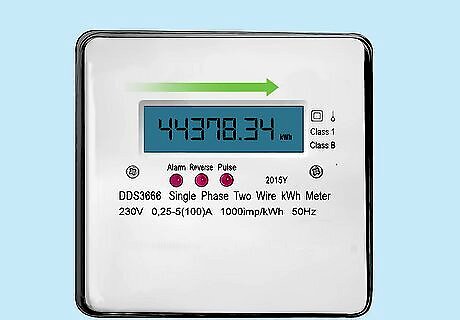
Write down the numbers from left to right. Grab a piece of paper and a pen. Head outside and stand in front of your meter. Your meter’s reading is the large number displayed in the center of the screen. Write this number down going from left to right. This process is identical for rotary meters as well, which don’t have dials or digital screens, but those rolls of numbers that rotate. They’re technically analog, but you read them like digital meters.Read an Electric Meter Step 6Bullet1.jpg
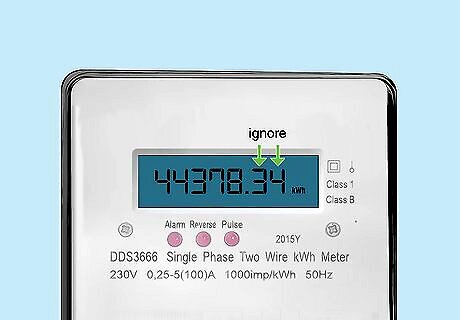
Ignore any extra numbers or decimal points. Depending on the design of your meter, there may be decimals or extra digits on the side of the main reading. These digits are either rate settings or fractions of the reading, and they may be a different color or style. Don’t worry about these. If they’re decimal points, they’re going to change by the time you do the math on your current bill anyway, and they’re insignificant enough that they probably don’t even show up on your bill anyway.
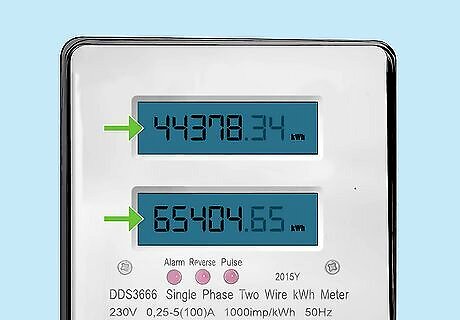
Jot both numbers down if you have separate rates displayed. If there are 2 different readings displayed, or the number flashes to display a different reading, you have multiple readings. Write down both numbers. Both readings are valid here, they’re just tied to different payment rates. Some utility companies will charge more for energy usage during peak hours as an effort to incentivize consumers to take it easy when the grid is under a lot of pressure. This is common in dense areas, like New York City or Chicago.
Finding Your Current Usage
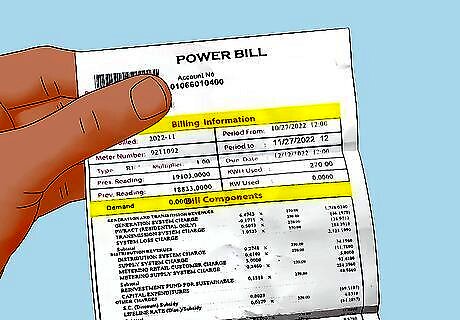
Grab your most recent electricity bill. Find last month’s energy bill. Look for a line like “total reading” or “electrical meter reading.” This number should be slightly lower than the number you jotted down when you were reading your meter outside. Your bill probably highlights the “monthly usage” since that’s what you’re paying for. The total usage or total reading might be listed in a smaller font or lower down on your bill. Just as a reminder, your electrical meter never resets. If your previous month usage appears to be higher than the reading on your current meter, contact your utility company. Your meter is defective.

Subtract the previous bill’s total reading from the current reading. Take your current reading and subtract the total from last month’s bill. This will give you your current electrical usage for the month. For example, if your meter currently reads 4,392 and last month’s bill’s total usage is 4,302, your current monthly usage is 90 kWh.
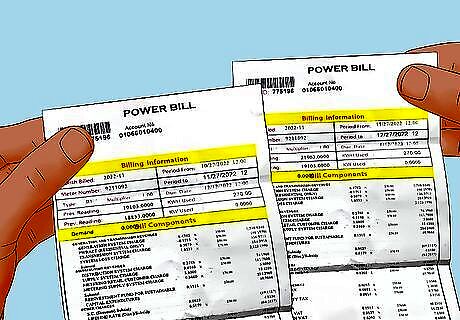
Compare your current usage to previous months. By monitoring your monthly electrical usage, you can get a better sense for how much your energy consumption actually costs. It’s also a good way to determine whether something is actually wrong with your meter or electrical usage. If your current behavior doesn’t match the number you see on the meter, it’s time to call your electrical company. You may also need to check your current meter when you’re on the phone with your utility company to confirm that they’ve got the right meter.




















Comments
0 comment